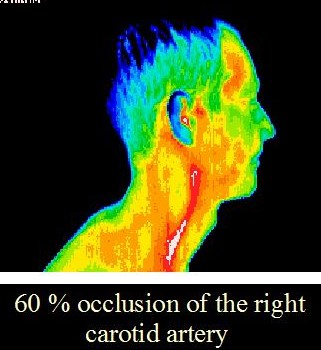October 30, 2019  Research Update: Acupuncture and Respiratory Issues
Research Update: Acupuncture and Respiratory Issues
The Journal of Complementary Medicine Research conducted a study that compiled the research from multiple trials to evaluate the effects of acupoint application for asthma in adults. Eight separate studies were included in the review. The results indicated acupoint application decreased the production of immunoglobulin E and increased the amount of air people could exhale in a single breath – a common way to diagnose asthma, because lung congestion reduces one’s exhalation capacity. The review concluded acupoint application, whether it be acupressure or acupuncture, helps improve pulmonary function, while reducing the levels of immunoglobulin E and interleukins in the blood.
Respiratory issues and deaths associated with them have shot up tremendously over the past 35 years in the United States. The number of deaths from chronic respiratory illnesses jumped from 41 in 100,000 in 1980 to 53 in 100,000 by 2014. Chronic obstructive pulmonary disease or COPD is the leading cause of respiratory deaths, but other ailments like asthma, interstitial lung disease and pneumoconiosis (a disease of the lungs due to inhalation of dust, characterized by inflammation, coughing, and fibrosis) are also contributors. In many cases, symptoms are merely masked or managed through the use of pharmaceuticals. But, alternatives like Traditional Chinese Medicine (TCM) can address both the symptoms and the root causes of the disease.
Traditional Chinese Medicine considers how the psyche affects the physical body, making emotional wellness just as important as physical health.
In TCM, every organ is associated with a series of properties. These associations provide clues that help the TCM practitioner locate the root of the physical problems, while guiding them through the treatments. The lungs are associated with grief and sadness, the season of fall, the color white and the pungent flavor. The energy of the lungs is very important to all aspects of human life. When the body’s energy is imbalanced, disease or illness my take root
The lungs are known as the “Prime Minister” in TCM. They control breath and energy, while assisting the heart with the circulation of blood throughout the body. The lungs also control the skin, which breathes through the opening and closing of the pores, helping to regulate body temperature both through perspiration and shivering.
Acupuncture can be a great asset in balancing the energy of the lungs. The function of the lungs is to descend and dispense energy downwards and to dissipate it outwards. When acupuncture points are stimulated the flow of your lung energy can greatly improve, while opening up the airways and increasing the uptake of oxygen within the cells of the whole body. Acupuncture also helps relax the muscles associated with breathing, allowing lung energy to flow properly.
September 3, 2019 
A 2018 study published in the World Journal of Acupuncture-Moxibustion looked at the effect of acupuncture treatments on rectal cancer patients who were experiencing hand-foot syndrome caused by their chemotherapy treatments. Hand-foot syndrome is a known side effect of chemotherapy characterized by redness, swelling, tingling, numbness, itching and pain in the palms of the hands and soles of the feet.
The researchers found acupuncture significantly reduced all of the symptoms associated with hand-foot syndrome to the extent they considered 17 percent of patients completely cured and the treatments were significantly effective in 70 percent of patients.
To conduct the study, researchers from Chongqing Cancer Institute recruited 60 patients with rectal cancer undergoing chemotherapy. Half of the patients received acupuncture and half were treated simply by taking B6 vitamins. Their hand-foot syndrome was scored using two internationally recognized scales indicating symptom severity and physical disability.
The patients in the acupuncture group received 30-minute treatments every day for two weeks. The patients in the B6 vitamin group took the supplement daily for two weeks.
According to traditional Chinese medicine, hand-foot syndrome indicates poor energy and blood circulation, a deficiency in energy and blood or dampness leading to a blockage in energy that prohibits nourishment from reaching the skin and muscles, causing numbness and pain. The acupuncture treatments were directed at promoting blood and energy circulation and removing stagnation.
After the treatments, patients in both groups showed improvement, but symptoms and physical disabilities for the patients in the acupuncture group decreased significantly more than for the patients in the B6 vitamin group. Based on the analysis of the scores, in the acupuncture group, the treatments cured five patients were effective for 16 patients, meaning their symptom score was downgraded to the lowest possible number on the scale and their physical ability score increased to between 80 and 89 out of 100 possible points. The treatments were effective for 70 percent of patients compared with 36 percent of patients in the B6 vitamin group.
The report concludes, “The results demonstrate that an integrative model of patient care utilizing acupuncture as a treatment modality produces significantly less adverse effects associated with chemotherapy.”
Research consistently shows acupuncture is effective at increasing circulation throughout the body, improving the flow of blood and therefore nutrients to injured cells, muscles or tissues.
Acupuncture Reverses Chemotherapy Side Effects
July 30, 2019  How come people rarely question the efficacy and safety of mammograms, prescription drugs, cat scans and surgery when recommended by physicians but they scrutinize herbal medicine, Acupuncture, Thermography and Chiropractic?
How come people rarely question the efficacy and safety of mammograms, prescription drugs, cat scans and surgery when recommended by physicians but they scrutinize herbal medicine, Acupuncture, Thermography and Chiropractic?
How come they want to see proof that these "alternatives" are safe and work well when in some cases such as Acupuncture they have been helping people heal for over 3,000+ years? Or in the case of Thermography- it is a FDA approved medical device and has over 30 years of medical studies(on 10,000 people) to back up its place alongside other medical testing.
I have compiled a few studies about Thermography that may help you make an informed decision regarding your healthcare. I sincerely hope that you find these helpful.
Breast thermography and cancer risk prediction.
Michel Gautherie, Ch. GrosPublished in Cancer 1980
DOI:10.1002/cncr.2820450110
Thermography makes a significant contribution to the evaluation of patients suspected of having breast cancer. The obviously abnormal thermogram carries with it a high risk of cancer. This report summarizes the results of patients with questionable or stage Th III thermograms. From approximately 58,000 patients, most of whom had breast complaints, examined between August 1965 and June 1977, the conditions or a group of 1,245 women were diagnosed at initial examination as either normal or benign disease by conventional means, including physical examination, mammography, ultrasonography, and fine needle aspiration or biopsy, when indicated, but nevertheless categorized as stage Th III indicating a questionable thermal anomaly. Within five years, more than a third of the group had histologically confirmed cancers. The more rapidly growing lesions with shorter doubling times usually show progressive thermographic abnormalities consistent with the increased metabolic heat production associated with such cancers. Thermography is useful not only as a predictor of risk factor for cancer but also to assess the more rapidly growing neoplasms.
Breast Thermography A Non-invasive Procedure
Dr. Mercola Discussing Breast Thermography
Breast Thermography Questions Answered
Cut Your Risk Of Death In Half
4 Years And 10,000 Studies-Breast Thermography
Every woman should include breast thermography as part of their regular breast heath care. I have recommended the use of this technology extensively over the years in my newsletter. Thermography has the unique ability to “map” the individual thermal fingerprint of a woman’s breasts. Any change in this map over the course of months and years can signal an early indication of possible tumors or other abnormalities. In fact, studies have shown that an abnormal infrared image is the single most important indicator of high risk for developing breast cancer.
Susan M. Lark, M.D.
Distinguished Author and Leading Expert in Women’s Health
Breast thermography is an excellent adjunctive arrow in the quiver of tools for breast screening. Whereas structural screening looks for static anatomical abnormalities, thermography reveals physiological changes in the breast allowing for earlier intervention in the detection of premalignant and malignant processes. Additionally, breast thermography allows for proactive rather than just reactive measures in the fight against breast cancer. However, it is not intended to replace structural screening, but rather is an extremely valuable addition to armamentarium.
Scott T. Miles, M.D., F.A.C.O.G., C.T.T.
Fellow - American College of Obstetrics and Gynecology
Infrared imaging of the breast should be an integral part of any breast cancer screening program due to its value as an independent risk factor for breast cancer and its value as a prognostic indicator.
Jonathan Head, Ph.D.
Tumor Cell Biologist and Pioneer in Breast Cancer Vaccines
Director of Research - EEH Breast Cancer Research and Treatment Center
Associate Professor of Biochemistry - Tulane University
Thermography Detects Arthritis Early
Conditions Thermography May Be Helpful In Evaluating
June 19, 2019 
Mammography Is a Recipe for Net Harm
Written by ACCT May 06, 2015
Eric J. Topol, MD
The medical community prides itself on evidence to drive important decision-making. But when the evidence is contrary to entrenched medical practice, it has a hard time coming to terms. Such is the case for mammography recommendations. All of the data now available point to significant net harm—far more risk than benefit— for routine mammography. If this were a drug, the US Food and Drug Administration (FDA) would never approve it. Last year, the Swiss Medical Board, after reviewing all of the data, recommended abolishing mammography.[1]
But last week, the US Preventive Services Task Force (USPSTF) issued new draft recommendations regarding who should undergo screening and how often. There was no support for routine screening in women younger than 50 or older than 74 years. But the recommendation for women aged 50-74 years is to undergo mammography every 2 years. There has never been a large study of mammography done every 2 years, so the basis for that periodicity of screening is questionable. But there are abundant data for annual screening and they are not at all supportive of continuing this practice.
A systematic assessment based on all of the evidence available from 1960-2014 showed that for 10,000 women in their 50s, who are screened annually over the course of a decade, there are only 5 individuals whose breast cancer deaths are prevented.[2] But there are over 6100 women who have false-positive tests that lead to additional imaging and unnecessary biopsy procedures. This > 60% false-positive rate is an indicator of a remarkably poor test with respect to accuracy, no less the large toll of emotional turmoil that it engenders.
What about all of the biopsies that are performed? A recent study also underscored yet another level of imprecision: the problem of interpreting biopsies by pathologists when there is agreement among three experts about the presence of cancer only 75% of the time.[3] Added to the net harm of mammography is over-diagnosis, which occurs in 20%-30% of women who have an abnormal result but in whom cancer would not be apparent unless the scan was performed.
Nevertheless, these women often undergo surgery and receive chemotherapy or radiation (or a combination of all of these treatments), even though there is little to no impact on prognosis. Such individuals typically believe that their lives have been saved even though the data point against that assertion. A Harvard study published in the current issue of Health Affairs demonstrated that the cost of these false-positive studies and over-diagnosis was approximately $4 billion per year.[4] This is on top of the current US costs of annual mammography of nearly $10 billion.
It is time to reboot how we screen for breast cancer. Until now, the use of mass screening suggests that we are unable to differentiate the risk in any given individual. So instead of a smart approach that uses family history and genetics, we have dumbed it down and treated all women the same. As a result, we have come to rely on a test that is notoriously inaccurate but has become a fixed part of American medical practice since it was introduced almost 50 years ago. With the tens of millions of low-risk women unnecessarily undergoing screening each year, any test would be vulnerable to a high rate of false positives. That applies to higher-resolution scans, too, such as magnetic resonance, digital mammography and ultrasound. Indeed, there is a better path forward.
Why Family History and Genomics Matter
There is strong evidence that family history is critical for defining risk. Beyond family history, we have the ability to sequence the genes known to carry high-risk mutations. Dr Mary-Claire King, who discovered the BRCA1 gene, has advocated that all women age 30 and older should be screened for mutations that carry a high risk for breast and ovarian cancer.[5] She’s right. And at some point, why not add men, who unknowingly can pass along important BRCA mutations to their daughters?
We didn’t have a way to widely implement such a recommendation until this past week when a collaboration, called BRCA Share, was reported between the two largest central lab companies—Laboratory Corporation of America and Quest Diagnostics —as was the announcement of a new genetic testing company called Color Genomics. For $249, Color Genomics is offering, via a saliva sample, sequencing of the BRCA genes along with 17 other genes that carry a high risk for familial cancer. For 1 year of mammography costs in the United States, we could now perform such genetic testing for over 56 million women. The unrelenting plummeting of the cost of sequencing—and a much more expansive approach to the whole genome (instead of just ~20 genes)—is just around the corner.
When she announced her choice to undergo bilateral mastectomy in 2013, Angelina Jolie wrote in an op-ed in The New York Times : “But today it is possible to find out through a blood test whether you are highly susceptible to breast and ovarian cancer, and then take action. Life comes with many challenges. The ones that should not scare us are the ones we can take on and take control of.” Just a couple of years later, the Angelina Effect on heightening awareness and the US Supreme Court decision against Myriad Genetics’ BRCA testing monopoly have introduced exciting opportunities for adopting a new approach. We shouldn’t be scared of it. It doesn’t even require a blood test anymore. We should take it on, study it, and exploit the progress in genomic science to develop an intelligent, evidence-based, and economically attractive precise path forward.
References
1.Biller-Andorno N, Jüni P. Abolishing mammography screening programs? A view from the Swiss medical board. N Engl J Med. 2014; 370:1965-196. Abstract
2.Elmore JG, Kramer BS. Breast cancer screening toward informed decisions. JAMA. 2014;311:1298-1299. Abstract
3.Elmore JG, Longton GM, Carney PA, et al. Diagnostic concordance among pathologists interpreting breast biopsy specimens. JAMA. 2015;313:1122-1132. Abstract
4.Ong MS, Mandl KD. National expenditure for false-positive mammograms and breast cancer overdiagnoses estimated at $4 billion a year. Health Aff (Millwood). 2015:34;576-583. Abstract
5.King, MC, Levy-Lahad E, Lahad A. Population-based screening for BRCA1 and BRCA2. 2014 Lasker Award. JAMA. 2014;312:1091-1092. Abstract
May 1, 2019 Cranberry Ginger Smoothie Recipe
The kidneys are vital organs that allow our bodies to process waste and turn it into urine and filter our blood of toxins before it gets back to the heart. The kidneys also maintain our overall fluid balance and create hormones that regulate blood pressure, support bone health and produce red blood cells. To support your kidneys, it’s beneficial to stay plenty hydrated and avoid extra salt in your food.
Jam-packed with vitamins and healthy fats and low in sodium from all the fresh fruits and veggies, this smoothie is a kidney-boosting wonder!
Cranberries are often praised for their bladder-healthy benefits. They are also full of Vitamin C and fiber and have anti-inflammatory effects. Walnuts are a great source of healthy fat and also benefit the kidneys, according to traditional Chinese medicine. You can make this smoothie with water or almond milk for an extra calcium boost. Making sure you have enough calcium in your diet can help to prevent kidney stones. Lastly, ginger is always a great smoothie addition, making the flavor more dynamic and contributing to the smoothie’s anti-inflammatory effects.
To make, combine the ingredients in a blender and enjoy!
Ingredients:
● 1 cup water, almond milk, hemp seed milk, or rice milk (organic "milks")
● 1 ½ ounces organic baby spinach
● 2 ounces organic cranberries (fresh or frozen)
● 2 organic dates
● 1 chopped organic pear
● ½ inch fresh organic ginger
● 3 tablespoons organic walnuts
● 1 cup ice
March 4, 2019  With March comes the promise of sunnier, warmer days, inspiring many people to get outside and into the woods, parks or whatever green spaces their town has to offer.
With March comes the promise of sunnier, warmer days, inspiring many people to get outside and into the woods, parks or whatever green spaces their town has to offer.
Unfortunately, for many people the arrival of spring also means another round of seasonal allergies and the accompanying symptoms. Many people suffer through weeks of a runny nose, watery eyes and a scratchy throat, which make it hard to want to get outside and relish in the new growth sprouting up all around.
Instead of immediately reaching for the Claritin, consider learning about the herbs and foods growing right outside that might support you in alleviating your symptoms this year.
This recipe for parsley pesto is a twist on an old classic. Its vibrant green color is meant to help ring in spring, while the substitution of parsley for basil is meant to support you in fighting off some of those nasty allergies. Parsley is recognized for its potential to alleviate allergic reactions because of a naturally occurring antioxidant called quercetin, which is found in many plants as well as several common foods, including parsley. Quercetin is a natural antihistamine, meaning it blocks the release of the compound histamine, which the body releases in response to allergic and inflammatory reactions. Quercetin also has anti-inflammatory properties, which can be very beneficial in mitigating the severity of allergic reactions.
This recipe also includes mint, for more fresh, springy flavor, and garlic, another nutritional powerhouse. Research has shown that garlic can actually suppress the release of a substance called beta-hexosaminidase. Stopping the body’s release of beta-hexosaminidase is linked to stopping or reducing allergic reactions. Garlic also has vitamin C, which is great for boosting immunity, it has strong germ-killing effects and it has been used for centuries to treat lung ailments such as asthma and pneumonia.
Spread this pesto like mustard on sandwiches or use it as a pasta sauce or base for your next pizza.
Makes about ½ cup.
Ingredients:
● 2 organic garlic cloves, roughly chopped
● 2 cups, tightly packed, organic parsley leaves, coarsely chopped
● 1 tablespoon, tightly packed, organic mint leaves, coarsely chopped
● ⅓ cup organic olive oil
● 6 TB freshly grated organic Parmesan cheese
● Salt to taste (Himalayan pink salt)
● Freshly ground pepper (optional)
Directions:
In a food processor, drop in the garlic and turn on. When the garlic is chopped and sticking to the sides of the bowl, stop. Scrape the garlic down into the bowl. Next, add the parsley and mint, processing until finely chopped. With the food processor on, slowly add the olive oil until the mixture is smooth. Stop the machine and scrape down the sides of the bowl. Add the cheese. Pulse to combine.
February 5, 2019 
Digestion is a complex task performed by the body. It begins in the mouth and finishes when the ingested food leaves the body through the rectum. For all we have learned over the years regarding digestion, there is still so much more we don’t know or are still learning. For example, it wasn’t until recently, the last 10 years or so, that modern medicine confirmed our gastrointestinal tract is our second brain. This discovery is drastically changing the way the body and its many functions are viewed, because everything we put in our mouths can potentially have life-altering effects on the mind, as well as the body.
Digestive disorders are rampant in the United States. Surveys estimate nearly 70 million people in the United States are affected by some sort of digestive disorder. This could be anything from gallstones to acid reflux to pancreatitis. For many, these disorders are extremely debilitating. But for every person dealing with a debilitating digestive disorder, there are thousands more that just assume everything they are experiencing is “normal.”
Traditional Chinese Medicine (TCM) is just one of the many ways people can deal with their digestive disorders. TCM is a very old medical system that utilizes many different modalities to treat imbalances in the body. Acupuncture is just one of the modalities that can be used. More and more studies about the effectiveness of acupuncture are being performed every day, many of which hold great promise for those who suffer from digestive issues.
Acupuncture helps with digestion because it treats the person holistically, meaning all parts are considered when treatment is rendered. There is no compartmentalizing as in Western medicine. So, a person being treated by a licensed acupuncturist or TCM practitioner will not only notice changes in their digestive issues, but they may also notice changes in their psyche too. And since the mind and body are closely connected, this can be very beneficial for the patient.
Studies have shown acupuncture can stimulate peristalsis in the intestinal tract. This is very helpful for people who deal with chronic constipation. In as few as one to two treatments, a person suffering from chronic constipation may find relief.
Nausea and vomiting are another frequent problem associated with digestion. Acupuncture and even acupressure are wonderful tools for calming the upset stomach. One acupressure point on the underside of the forearm has been studied extensively just for this function. In most cases, the nausea and vomiting are greatly decreased or stopped altogether.
Bloating is another common problem associated with the digestive tract. This can be caused by eating too much food or improper digestion. Acupuncture treatments help the digestive process of breaking down foods without the excess gas that frequently causes bloating.
Diarrhea isn’t just a problem that occurs when somebody is suffering from the stomach flu. In fact, it is much more common than many people think. Acupuncture treatments can help resolve diarrhea by clearing either excess heat or excess dampness from the digestive tract, while also strengthening it.
If you are curious about how acupuncture and Traditional Chinese Medicine can help you with your digestive issues, ask us! We are happy to guide you along your healing journey.
 Research Update: Acupuncture and Respiratory Issues
Research Update: Acupuncture and Respiratory Issues




 How come people rarely question the efficacy and safety of mammograms, prescription drugs, cat scans and surgery when recommended by physicians but they scrutinize herbal medicine, Acupuncture, Thermography and Chiropractic?
How come people rarely question the efficacy and safety of mammograms, prescription drugs, cat scans and surgery when recommended by physicians but they scrutinize herbal medicine, Acupuncture, Thermography and Chiropractic?

 With March comes the promise of sunnier, warmer days, inspiring many people to get outside and into the woods, parks or whatever green spaces their town has to offer.
With March comes the promise of sunnier, warmer days, inspiring many people to get outside and into the woods, parks or whatever green spaces their town has to offer.